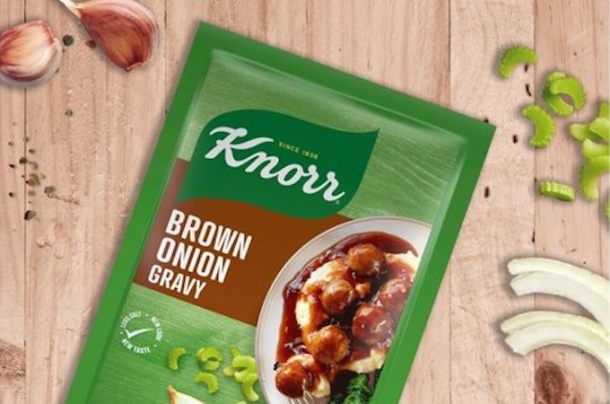If food labels aren't simple, consumers may ignore them
Consumers gather information about food from a variety of sources including their families, the media and through education. But another way that they can get the information is through food and nutrition labels.
Nutrition labeling refers to the section on food labels that declares nutrient content. This includes a nutrition information table, a list of ingredients, the nutrient content claims made on food labels and any health endorsement logos.
Internationally, there is growing evidence showing the usefulness of nutrition labeling. It has been identified as a population-wide intervention to promote a healthy diet and reduce the burden of non-communicable diseases.
Globally, non-communicable disease accounts for a large number of deaths. About 13% of deaths are caused by raised blood pressure while 9% are caused by smoking, 6% by raised blood glucose or physical inactivity and 5% by being overweight or obese.
In South Africa, research has shown that more than two-thirds of South African women are overweight or obese. South African men are not far behind.
Evidence shows a consistent link between the use of nutrition labels and healthier diets.
In recent years, the global trend has been a move towards mandatory nutrition labeling. This includes the nutrition information table, regardless of whether a health or nutrition claim is made on the label. Developed countries have led the charge, with statutory regulations on nutrition labeling. And South Africa has joined in, updating food labeling regulations in March 2012.
But studies have shown that some South African consumers do not always understand nutrition labels and therefore don't pay attention to them. If consumers were educated on the importance of nutrition labeling and how to read and understand the information, they may be more willing and capable of making healthier food choices.
Food and nutrition labeling
Food labels are meant to inform consumers and help sell products. They tell consumers about the composition and nature of products to avoid confusion and to protect them against misuses, risks, and abuses.
If well designed, nutrition labeling can potentially have a positive influence on a person's choice of food purchased. This, in turn, can help the government of a country achieving its public health objectives.
Some research has been done to determine whether consumers in South Africa use and understand nutrition labels. A number of studies show that South Africans have mixed feelingsabout food labels as an information source. Some consumers do not read labels and are not interested in them. Time constraints stop them and they are either more concerned about the product's price or they stick to their habitual purchases. Other consumers feel the taste of a product is more important than its nutritional content.
A recent review has found that nutrition labels are perceived as a very credible source of nutrition information and that many consumers use these labels as a guide in the selection of food products. The use of nutrition labels varies considerably across different sub-groups. But research shows that some consumers struggle to interpret the nutrition information on labels. They find the different nutrition label formats and the information overload on labels confusing. And they would prefer graphic information such as a logo rather than a traditional nutrition information table.
Different approaches to nutrition labeling
Apart from the mandatory nutrition labeling trend, the European Food Information Council notes that another global trend is standardising nutrition content by using front-of-pack labels.
But there is an ongoing debate as to the best front-of-pack labeling approach. Research has shown that for front-of-pack labeling to be effective and to avoid consumer confusion, a single, credible and reliable front-of-package nutrition labeling system should be adopted. This will help food manufacturers and retailers, and may assist consumers to make smarter food as well as beverage choices at a glance.
There are four main approaches to front-of-pack nutrition labeling:
• single healthy eating symbols/health logos/health endorsement logos;
• traffic light labeling of nutrients, where red, amber and green are used to indicate the levels of key nutrients;
• a hybrid of traffic lights and percentage guideline daily amounts that provide information on these percentages; and
• percent guideline daily amounts, where the percentages for key nutrients in a serving/portion or 100g of food are given.
Some countries such as Thailand have introduced mandatory front-of-packaging labels, while others - Australia, New Zealand and the US - are considering it.
In South Africa, front-of-packaging labels are not mandatory or standardised. Amendments to the labeling regulations - published for comment in 2014 - include a section on front-of-pack labeling stipulating that it is voluntary. However, if a label is present, it must comply with certain conditions. The Department of Health is still considering the public comments, which could result in further amendments to the regulations.
But there is a need for more simplified labels on both the front and the back of products. Although the food industry, health professionals, and consumers face many changes, challenges and opportunities around food and specifically nutrition labeling, it is the ideal time to promote the use and understanding of nutrition information on labels to consumers.
Disclosure statement
Nelene Koen does not work for, consult, own shares in or receive funding from any company or organization that would benefit from this article, and has disclosed no relevant affiliations beyond the academic appointment above.
Read the original article on The Conversation Africa.
News Category
- International retailers
- On the move
- Awards and achievements
- Legislation
- Wine and liquor
- Africa
- Going green
- Supplier news
- Research tools
- Retailer trading results
- Supply chain
- Innovation and technology
- Economic factors
- Crime and security
- Store Openings
- Marketing and Promotions
- Social Responsibility
- Brand Press Office
Related Articles

Warning of Eskom collapse

Knorr recalls brown onion gravy sachets

Eskom CEO shares good news about load-shedding

Tax warning for South African businesses


